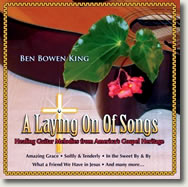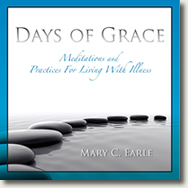Healing Hymns
A legacy in American music
America’s “healing music”? To a lot of us the term is an oxymoron. Google it and you’ll get the impression that all “healing music” comes with an exotic pedigree from places like India, Japan and Peru.It’s as if we Americans have to go to someplace foreign to find the music that will soothe our souls and heal our ills. I should know. During the past 20 years I’ve lent my hand to that trend by producing and marketing around 30 CDs that ran the gamut from African drum rhythms and Native American flute melodies to Aztec/Renaissance choral music.
But there wasn’t a single note of “American healing music” in all those releases. The mantra was “the more exotic—the better.”
That was until I ran across the term “a laying on of song” and did an immediate double take. Initially the term sounds like it’s related to the practice of a “laying on of hands.” That concept is tied to the idea someone with “a special “gift” from the Holy Spirit” places their hands on an ill person and causes “a healing.” It’s gotten a bad name thanks to TV preachers.
In contrast, the wonderful aspect about a “laying on of song” is that “the healing” isn’t ascribed to a single person’s “gift.” Instead it’s all about the healing properties of the music. The drill is simple. If someone is sick or depressed their friends gather around their bed or sit them in the middle of a “hollow square” made by the singers and musicians. There aren’t any hymn books or fancy arrangements. They aren’t needed.
The “set list” for a “laying on of song” is comprised of the classic hymns that are a part of America’s spiritual DNA. You may have first heard these songs as a child, but hymns like “Amazing Grace,” “What A Friend We Have in Jesus” and “The Sweet By and By” have a special power when they’re used for “a laying on of song.”
Our ancestors knew this. The Sacred Harp Hymnal, which dates back to Colonial times, states:
Music is a God-given faculty that by sounding its melody and harmony opens the doors to humans’ hearts and souls and bring man to his first relationship with God.
What ties these classic hymns together is a point of view— they were born out of adversity. The composers of the songs, which are almost all over 100 years old, were writing music to “lift up” a congregation or a sole listener facing life’s challenges.
Look up the “back stories” of the songs associated with the “laying on of song” tradition and you’ll learn that “In The Sweet By and By” was composed by a part-time pharmacist/preacher trying to comfort a depressed customer. And it turns out the summer camp classic, “Kum-Bah-Yah” came from the African American slaves living on the Georgia Sea Islands. Translated from the Gullah dialect the title means “Come By And Get Us Out of Here!”
And while the lyrics to those hymns and others like, “What A Friend We Have In Jesus,” “Shall We Gather By The River” and “Rock of Ages” are timelessly moving, there is also something special about their harmonies and melodies.
Personally though, I can’t sing a note. So when I began to create “a laying on of song” to interweave with The Rev. Mary Earle’s readings on Days of Grace I was initially stuck. Then I read a biography of Mother Mabel Carter—it turns out in the pre-amplifier days preachers tuned their guitars “open” so the strings would ring louder and fit the harmonies and melodies of the old hymns. From a musician’s standpoint I can testify that this arcane guitar sound has an effect on people.
Over the past two years I’ve often played instrumental hymns for Alzheimer’s patients. Talk about some kind of “healing.” The first time I played “Amazing Grace” for this audience I broke out in “goose bumps” because the “patients,” out of nowhere, began singing the lyrics—in perfect harmony to my guitar melody.
In retrospect it was a perfect example of the difference between “a healing” and a “cure,” if you take a realistic approach to any type of “healing music.” There’s no way anyone is going to say “Amazing Grace” cures the patients of the torturous effects of Alzheimer’s.
But while the music is playing the patients are “healed” in the sense that for a few minutes memories are reconnected and there is an undeniable sense of peace in the room. Like they’ve been saying for centuries, you can always count on these old, classic hymns to do their job.

